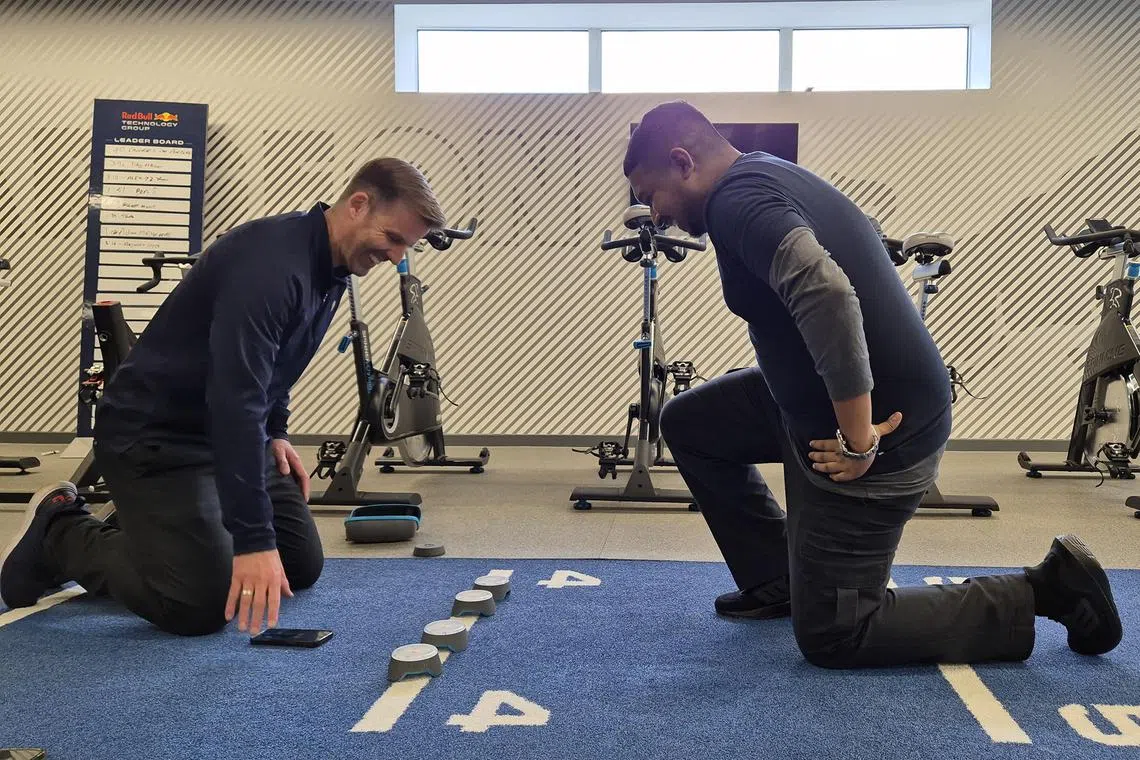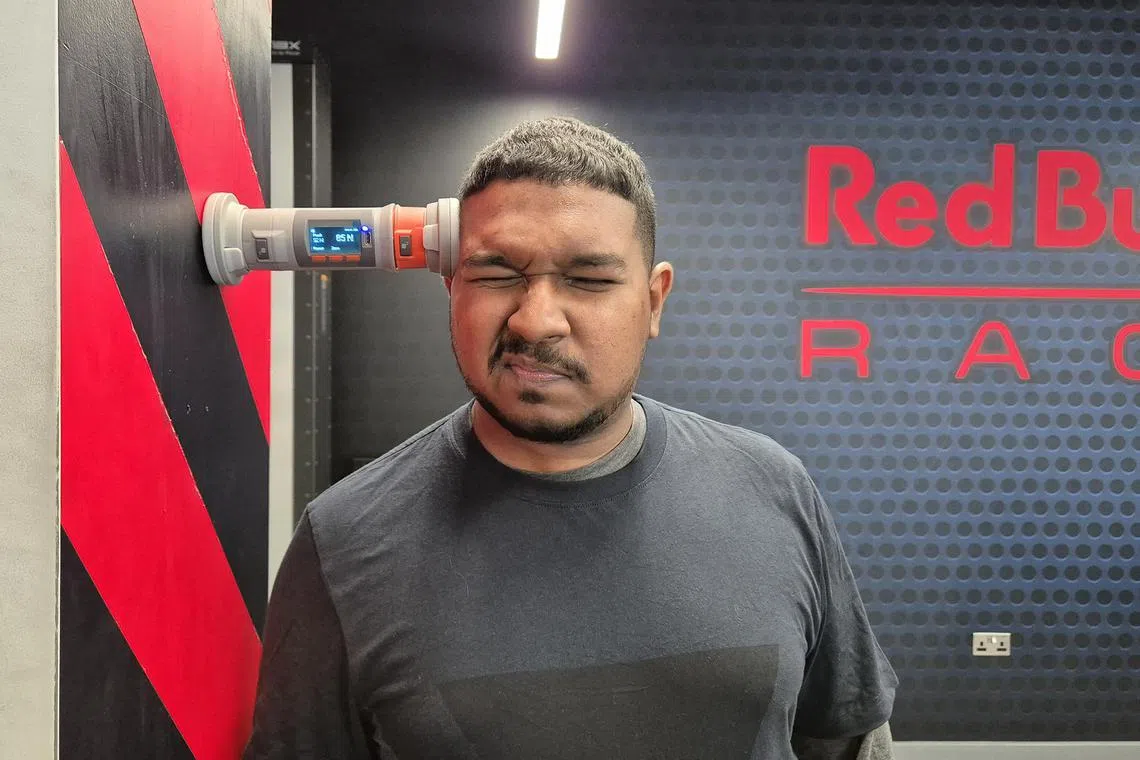Do you have what it takes to be an F1 driver? Take the test and find out
Sign up now: Get ST's newsletters delivered to your inbox

The writer (right) preparing for a reaction test with Red Bull Racing's human performance coach David Osgathorp.
ST PHOTO: ASHTON BOEY
Follow topic:
My thighs are burning, I am out of breath and the back of my T-shirt is soaked – and I am only 20 minutes into a preview of what it takes to be a Formula One driver.
I am here at Red Bull Racing’s headquarters in Milton Keynes, home to F1’s six-time constructors’ championship winning team.
David Osgathorp, the team’s human performance coach, is putting me through the paces of a driver’s gym routine.
Ominously, he says: “F1 is a sport where a number of people... just think it’s all about the car and someone just needs to turn up and get into a car.
“An average person on the street getting into a car, they’re not going to last more than a lap or two before they really suffer the physical demands of being in that car.”
First, Osgathorp guides me through a quick warmup involving a stationary bike with the resistance dialled up. When my thighs feel the burn, he loads me with information and poses several mathematical questions.
This mimics race situations where drivers must multitask, respond to their teams via radio while putting maximum effort into driving. The ability to go full throttle, take in information and give a comprehensible response is vital.
Out of breath, I struggle with the equations. It is definitely not a test I enjoy as I prefer gym sessions with mindless music in the background.
Listing cardiovascular fitness, neck strength and an extremely strong core as essential, Osgathorp adds that drivers “all need to have a fairly supreme level of fitness”.
Despite their globe-trotting schedule of 24 races this season, drivers typically have four to five fitness and gym sessions weekly to maintain their physique and keep their weight under 85kg – optimal for delivering the best results in the car.
After the warmup, it is time to test my grip strength using a dynamometer to see if I can handle the steering needed in the world’s fastest cars. The better the grip, the faster one can accelerate, the harder you will be able to brake and the quicker you will be able to go around corners. A full squeeze on the device using my left and then right hand each produced about 300N (Newtons) force.
The reality check comes – F1 drivers tend to score closer to 600N on each hand.
The next revelation is startling.
During races, drivers need to apply significant force on the brake pedal and this requires a lot of force through their legs. To demonstrate the power and strength needed to brake, especially in situations where it can require over 100kg of pressure, Osgathorp loads about 45kg (half my body weight) on the leg press machine.
I anticipate that it will be a piece of cake, but I am brought back down to earth very quickly. Osgathorp tells me to do it with just one leg before hitting me with another fun fact: the proper braking force in an F1 car is double one’s body weight.
Doing two reps using my right leg – which involves pushing and then trying to slowly bring it down – is no easy feat.
Neck strength is also key for an F1 driver as they are submitted to an average G-force of 6Gs – fighter jets can go as high as 9Gs – during a race.
I am tasked to roll my tongue behind my front teeth, stand in a slightly slanted position, brace my core and push as hard as possible against a dynamometer propped against the wall. My score is 92N – drivers can reach about 400N.

The writer pushing against a dynamometer propped against the wall to measure how much of power he can produce through his neck.
ST PHOTO: ASHTON BOEY
Maybe I will have better luck in the reaction test – reactions times are also important for race starts, avoiding collisions and performing quick overtakes.
Several pods are placed in front of me and my task is to respond to the lights as quickly as possible in 20 seconds by tapping them.
A usual score is above 40 and I come close with 38. Maybe city driving in Singapore has some benefits after all.
But my joy is shortlived as I get my final test in core strength. This training helps reduce fatigue for drivers, protects vital organs and reduces the risk of injury as core muscles become a natural brace for the body in the event of a crash or sudden impact.
Osgathorp gets down on the floor with me for a plank and tells me to hold it in for 90 seconds. “Well done,” he says after I pull through with some difficulty, adding “drivers can hold it for 3 minutes minimum with a bit of weight on their backs”.
We end our 20min session in the most deflating fashion and Osgathorp assesses my performance with a wry smile.
Perhaps he takes pity on my panting self and suggests – F1 is too far of a stretch but maybe I can make the cut in F3.
I will remember that the next time I see Max Verstappen at the Singapore Grand Prix.


